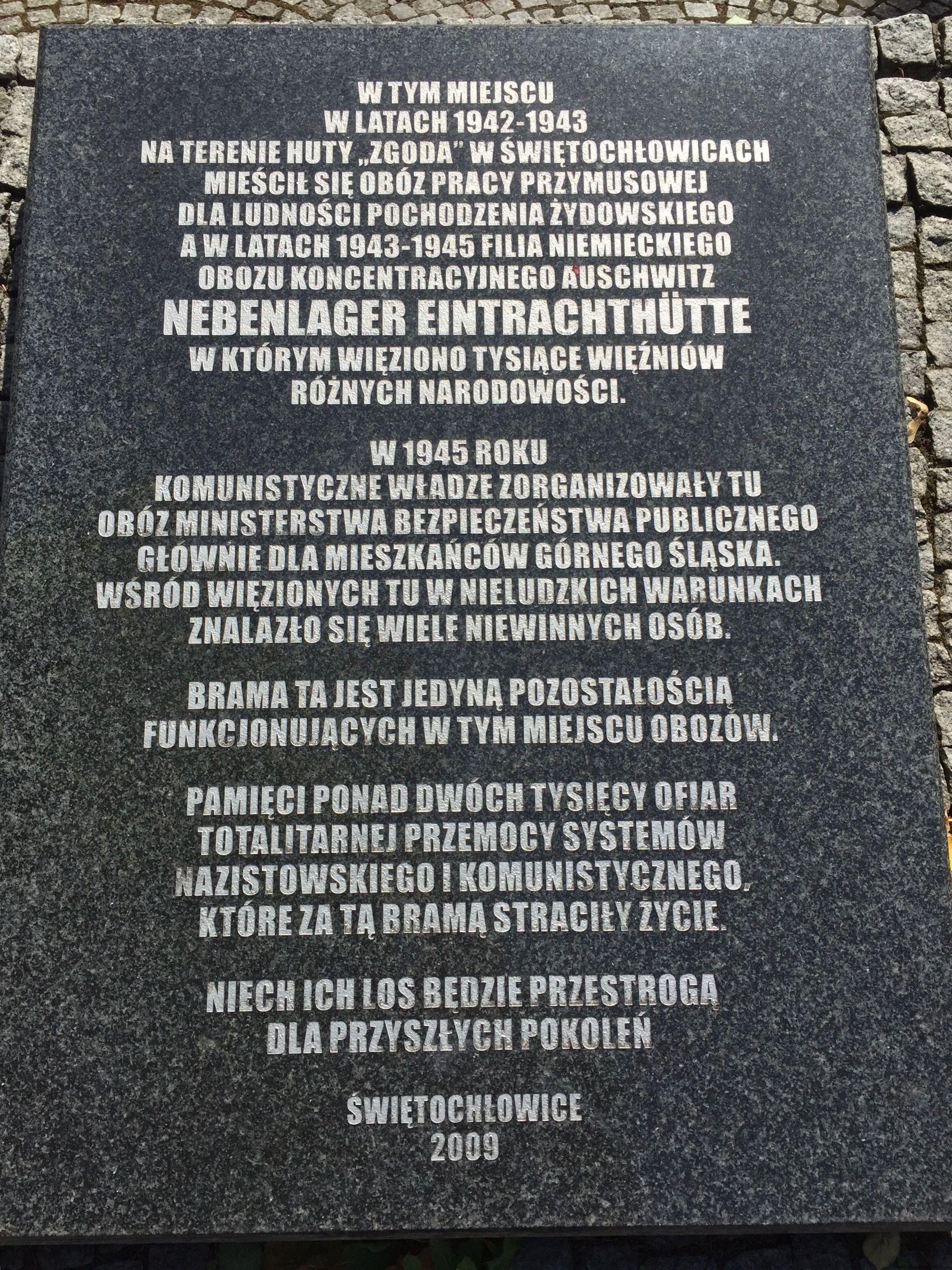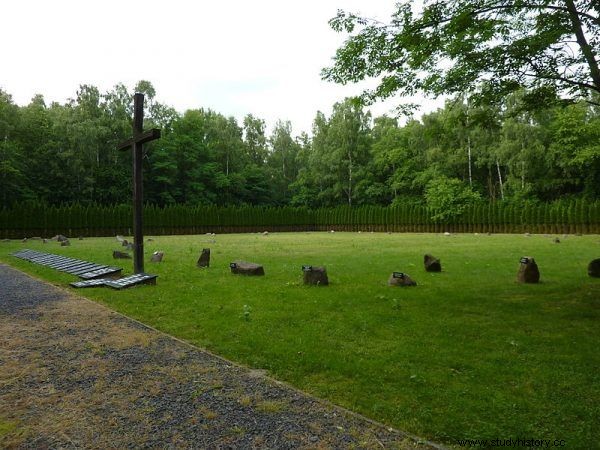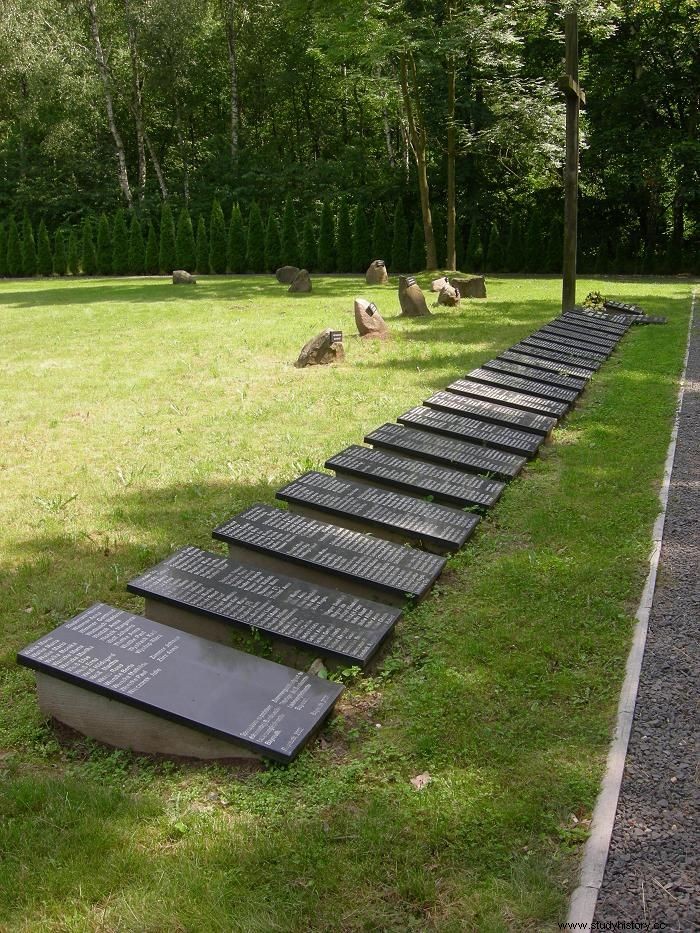The new communist authorities of post-war Poland established their own prisons in buildings abandoned by the Nazis. Germans, Poles and Ukrainians were herded into the camp barracks. In some there were devastating excesses. However, the Stalinist torturers managed to avoid any justice.
Salomon Morel, executioner of the Agreement
The infamous name of the most brutal (and therefore probably also the most famous) of the commanders of the secret service camps goes to Salomon Morel. This young partisan ended up in the Security Service after the war… straight from the forest. Soon he took over the Zgoda camp in Świętochłowice. Even today, this place is a symbol of Stalinist repression for many Silesians.
Short, stocky, with a riding crop in his hand, Morel greeted his prisoners with the words: Auschwitz was a sanatorium compared to what I will arrange for you here . In the worst period, the death rate under Zgoda exceeded the number of deaths in the Soviet labor camp. Morel had macabre tastes:he liked to put people on top of each other, side by side, to form a gigantic pyramid, for example. It was so high that when the commandant was climbing on top of it under the ceiling, to dance the Kalinka on people those at the bottom stood no chance.

A plaque commemorating the victims of the German concentration camp and after the war located in Świętochłowice (photo:Drozdp; license CC BY-SA 4.0).
Solomon Morel was responsible for the extreme destruction, starvation and beating of camp prisoners. He also encouraged his subordinates to be raped and beaten. Every day in the camp they were beaten. The condition of the prisoners was so bad that there were even acts of cannibalism! The KBW officers guarding them allowed the members of the commando, who were throwing corpses into ditches full of lime every day, to mutilate the corpses.
Did Morel receive a well-deserved punishment for these bestialities? Nothing similar. He spent his entire professional life in Poland. For Gomułka, in 1964, he defended - and with distinction! - MA thesis at the Faculty of Law of the University of Silesia. It was devoted to ... effective management of prisoners! .
The situation changed only after 1989. The Katowice prosecutor's office and the Commission for the Investigation of Crimes against the Polish Nation brought a genocide trial against the commander. Many witnesses who remembered the commander's crimes were found. Morel left Poland to avoid justice. He died in Tel Aviv in 2007.
"Bloody Czesław" Gęborski
In the late 1940s, the Labor Camp in Łambinowice in Opole Silesia also gained publicity. It was launched on the infrastructure of German Stalags - camps from the Second World War. "Fame" was assured by Czesław Gęborski, the commander who set fire to the barrack in the camp one night, and then stood next to him and shot the prisoners extinguishing the flames.
48 German civilians were killed. Gęborski called the attempt to extinguish the camp an escape attempt, and his behavior - a successful attempt to prevent it. For Gęborski, murdering and tormenting people was the order of the day. According to some witnesses, he killed when he was furious at some professional failure.

The symbolic cemetery at the labor camp in Łambinowice (photo:Julo, public domain license).
Contrary to Czesław's Bloody Morel, as Gęborski was called, he managed to bring himself to justice. In 1999, he was charged with the murder of 48 people, victims of a shootout from the night of the memorable fire. The trial lasted until 2005, when the court decided to inspect the site of the former camp.
After many years, Gęborski was supposed to go to the place where he committed his crimes. However, he did not live to see that moment, because he died of a heart attack a few nights before going on a site visit. Interestingly, there are still defenders of the commander's good name to this day. They invoke the presumption of innocence until a final judgment is delivered.
The 1999 trial was not the first to be brought against 48 murdered Germans. Gęborski's act was so loud that even in Stalinist Poland it was not possible to cover it up! There have already been two! The first trial, in the 1950s, ended with an acquittal. Counting on the effects of the October thaw, the matter was returned to after 1956.
Some communist apparatchiks associated with Lower Silesia led to another trial of the hated commander in the entire region. But also then, in the 1960s, the Court believed Gęborski. His translations about the attempted escape, the responsibility of his superiors and the fight for the good of the country were accepted. Despite these two "successes", the third trial might have been less successful for the accused. Perhaps this time Czesław Gęborski felt that the punishment was inevitable ...

The families of Gęborski's victims never lived to see justice. In the photo there are plaques with the names of the victims of the Łambinowice camp (photo:Jacques Lahitte; license CC BY 3.0).
Tadeusz Krawczyk, commandant of the quarries
Krzesimów is a tiny village near Lublin. From April 1945, several hundred former soldiers of the Home Army, who were considered enemies of the system, worked in the forced labor camp located there. Their plan of the day was established by commander Tadeusz Krawczyk. It involved a daily, several kilometers long, trip of prisoners to the quarry in Dominów. Prisoners did not return from it until late at night, lugging large, heavy, limestone stones.
Krawczyk selected prisoners who were not fit for work and ordered their murder in a nearby forest . Their graves were not discovered until 1996, when it was decided to build a decent road in Krzesimów. The bones excavated by the excavator were just below the surface of the earth. This took place after the death of the camp commandant. And he, therefore, never attained justice. He lived until the late 1980s, enjoying the health and respect of his colleagues in his socialist homeland ...

The shocking truth about the post-war Polish concentration camps can be found in Marek Łuszczyna's book "Mała zbrodnia" (Znak Horyzont 2017).
The Krzesimow case was completely unknown, incl. due to the proximity of the Lublin Castle, i.e. the SB torture chamber, where many people lost their lives. The establishment of the camp in Krzesimów was a response to the overcrowding of cells in the Castle. And although the commandant's office where Krawczyk was in office was located in a nice, classicist palace, according to the few witnesses and villagers involved in the process of discovering the truth about the camp today, the commandant felt removed.
He considered the management of the Krzesimów COP (Central Labor Camp) as a peripheral, insignificant occupation on the frontline of the fight for a new homeland. He took out his frustration on prisoners exhausted to the limit of consciousness. who were returning from the quarry dragging giant stones. Each of them was probably trembling at the sound of the commander's car in the distance. Krawczyk stood in front of a column of prisoners and reached for a gun…
